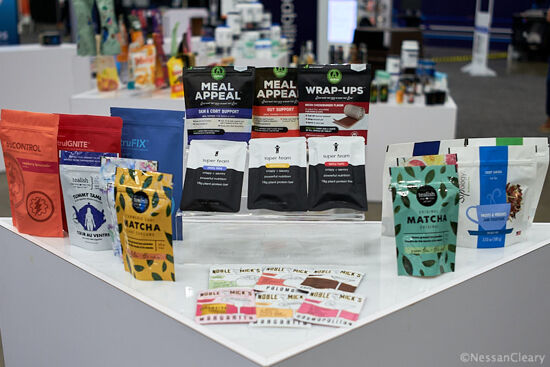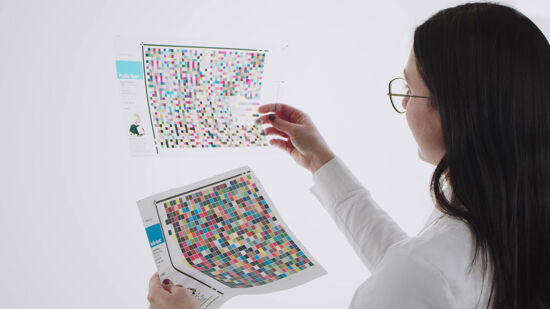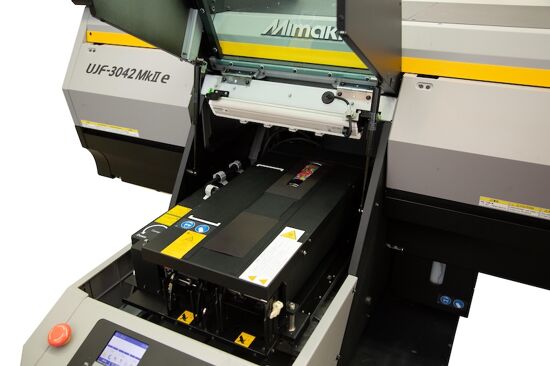Graeme Richardson-Locke visits FESPA Association, SPAI in India

FESPA's Head of Asscoiations and Technical Lead, Graeme Richardson-Locke shares his experience after visiting FESPA's Association, SPAI who are based in Kolkata, India. Graeme visited 4 skilled printing businesses during his visit including CDC Printers of India, Vibgyor Arts, Exclusive Graphics and Sri Ganesh.
Print Kolkata
I recently made my first trip to Kolkata, India. I knew I would be greeted with generosity and openness by Dilip Bhise, President and founder member of SPAI our long standing member association in India, who flew in from Mumbai to meet me. With its 600 company members spread across various applications of screen and digital printing, I had the opportunity to spend time with the SPAI team. Dr Mustafa Kapadia, Vice President and owner of CöLöRs, a special effects and UV coatings ink manufacturer, Jignesh Lapasiya, Secretary of SPAI and founder of Spry Media along with Azhar Qureshi, Joint Secretary and ink chemist all contributed enormously to my understanding of the market.
I was fortunate enough to visit four highly skilled printing business entrepreneurs around Kolkata during my stay.
I had some idea of what the experience might be like, but with 14 million people in the urban area, it’s fair to say the contrast between wealth and poverty, heat, humidity, and noise was a culture shock.
 Nothing stops the people of Kolkata.
Nothing stops the people of Kolkata.
Despite it’s challenges, the city retains its reputation for commerce. Everyone copes with intense traffic congestion, airborne and water pollution, and widespread waste management issues. Kolkata was once the capital of the British Raj after the East India Company — the largest company in corporate history — was nationalised. At its peak, the East India Company controlled 50% of global trade. The colonial legacy is visible in the well-preserved Victoria Memorial, St. Paul’s Cathedral, the High Court, and the National Library, as well as newer additions like Big Ben-style clock towers in the middle of intersections. Since 1947, when India gained independence, this incredible nation, with 240 mother tongue languages, 19,000 dialects, and 1.44 billion people, continues to grow and expand its international standing.
Focusing on the commercial printing sector alone, the industry is currently estimated to be worth $3.3 billion annually with CAGR of 4% (Dr Narayanan K.) The textile and apparel sector provides direct employment to 45 million people and 100 million people in allied industries, is another economic powerhouse second only to agriculture (Invest India).
As I toured the city with Dilip, I had plenty of time to learn about the language, traditions, business culture, and the vast opportunities within India’s borders. The country is largely self-sufficient when it comes to its supply chain, with the exception of digital inkjet technologies. At the SME level in wide-format and textile printing, many technologies are sourced from Chinese integrators.
Our first stop was to meet Manu Choudhury, the owner of CDC Printers of India. We visited their historic base in the city, where book production and presentation packaging are printed, finished, and assembled. Much of this work is done by skilled craftspeople with many years of experience. While this site operates B1 and B2 offset presses and a full complement of bindery and hand-finishing equipment, their larger second plant processes high-volume work through web-fed offset presses, automated case making, and more advanced automation. Manu, who studied colour science in the U.S., has led CDC to become the number one book producer in India and a significant player in case-making and luxury presentation packaging. The creativity and deep understanding of materials and methods across their product mix left a lasting impression.
It was hard for me to imagine anyone working in such heat and humidity, but the quality of the finished products spoke volumes about the talent and attention to detail of their team.
Our next visit was to Vibgyor Arts to meet Ved Dhote, a business showcasing the creative and extensive use of special effects printing to grab consumer attention in India’s vibrant marketplace. This third-generation printer specializes in UV screen printing and UV offset, varnishing, glittering, and metallic printing, achieving stunning 3D effects with micro-varnish. They start by laminating folding boxboard or cardstock with base metallic foils, allowing them to control every aspect of the process. Holographic, 3D, prismatic, or plain foils are all part of their offering. One highly effective sales tactic that stood out was how Vibgyor Arts deliver a standard overprint varnish order along with a more eye-catching, hard-to-counterfeit version enhanced with foil and micro-varnish. Customers are often unaware of these possibilities but quickly recognise the value in raising their product's shelf appeal. The result? Interest and upgraded orders. This approach led to increased margins and higher customer retention — a great reminder that many of us can exceed customer expectations if we simply show them what’s possible.
 Dilip from SPAI with Ved Dhote owner Vibgyor Arts by a cylinder press
Dilip from SPAI with Ved Dhote owner Vibgyor Arts by a cylinder press
Each factory I visited with Dilip was utilitarian in appearance. Perhaps the buildings’ drabness was due to the high humidity and 38-degree temperatures, which allowed trees and plants to grow in surprising places. Many of the production plants had been in use for decades, yet the work quality remained impeccable, even from cylinder screen presses that were nearly 50 years old — a testament to the ‘built like a tank’ nature of old mechanical printing presses.
The next day brought two more visits, this time to textile printers Exclusive Graphics and Sri Ganesh.
At Exclusive graphics, I was welcomed by its director, Uma Shankar Sinha, who was very modest about the four-story-long screen printing facility he had built over his working lifetime. Specialising in hand-printed, water-based screen printing, the company prints everything from heavy canvas for beach/tote bags through to lightweight cotton for children's pajamas. Cut-and-sew customers supply bundles of cut panels, which are printed either in single locations or all over to match back and sleeve patterns for seamless effects. As a screen printer trained in the 80s (I know!), I still admire the control and consistency manual printers achieve. Here, two printers worked on opposite sides of the flat table, sharing the squeegee and handing it off halfway through without missing a beat — no defects in sight. While this technique is mainly found in lower-cost manufacturing regions, it still delivers, guided by years of experience.
 Production manager of Exclusive Graphics and Uma Shankar Sinha, Director.
Production manager of Exclusive Graphics and Uma Shankar Sinha, Director.
 Long table screen printing with shared manual process.
Long table screen printing with shared manual process.
Our final stop was Sri Ganesh, a garment decoration business with 300 employees offering screen printing, foiling, DTG, DTF, sublimation, heat pressing, tufting, embroidery, and diamante work. They can apply almost any print or decorative finish requested, whether on finished garments or cut panels ready for sewing. We were welcomed by owner Santanu Dubey and his daughter at the screen-printing plant where they run12-hour shifts, with multiple automatic carousels tightly packed into an old jute building near the river produce great quality output. The enthusiasm and creativity for their work was inspiring but they remain humble considering their talent earned of 25 years. I encouraged them to enter the FESPA Awards to showcase their prints, as the production quality and creativity are world-class.
 Santanu Dubey with his daughter at Sri Ganesh
Santanu Dubey with his daughter at Sri Ganesh
 Screen print production floor
Screen print production floor
 Example of latest technique of Tufting.
Example of latest technique of Tufting.
 Water based and silicone inks
Water based and silicone inks
If you’ve made it to this point in my article, you’ve likely picked up on a few themes. The printers I met in Kolkata shared a determination to be different and to continuously improve. They deliver novel, creative printed products that captivate the market. While Indian consumers prefer eye-catching, colorful, and expressive designs, which may not appeal to minimalist Western designers, there’s much we can learn from this market. By pushing boundaries and applying creativity to materials and printing processes, we can make physical products that are ever more memorable and create lasting value.
Interested in joining our community?
Enquire today about joining your local FESPA Association or FESPA Direct
Recent news

What are the opportunities for printers regarding backlit displays and window graphics?
Nessan Cleary describes the various opportunities for printers regarding window graphics. There is a wide range of materials and lighting options available.

What is the difference between labels and packaging regarding narrow web printing?
Nessan Cleary shares how labelling has always been distinct from packaging but increasingly lines are becoming blurred between them.

